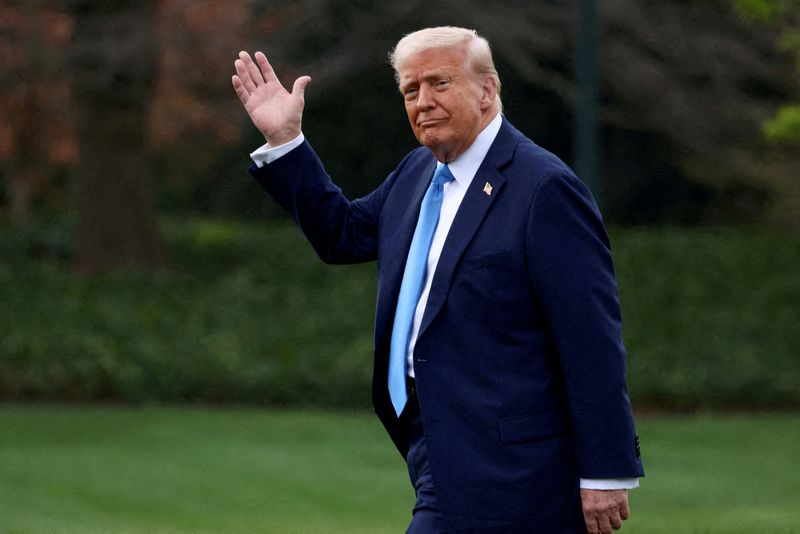TSX runs higher on rate cut expectations
Investing.com -- U.S. President Donald Trump’s reciprocal tariff announcement, now being called “Liberation Day”, is less than 24 hours away.
Trump will be announcing the tariffs at the Rose Garden press conference event on Wednesday with cabinet members present, White House press secretary Karoline Leavitt said.
“April 2, 2025, will go down as one of the most important days in modern American history,” Leavitt said Tuesday.
Trump has argued that the U.S. has been taken advantage of by friends and enemies for too long and that tariffs will bring manufacturing back to the U.S.
Early Success, But Major Worries
Trump’s thesis about manufacturing jobs re-shoring has already seen some early signs of success, at least in promises. The administration has publicly announced over $3 trillion in investments from foreign countries and multinational companies investing in the U.S.
But the question remains: “at what cost?”
While the investment announcements offer a glimmer of hope, worries that the tariffs will trigger a massive global trade war has Wall Street in a panic mode. Investors have been combing history books to research the Smoot-Hawley Tariffs, which are partly blamed for the Great Depression.
The benchmark S&P 500 is down 4.6% year-to-date and 8.4% from its February highs. The tech-heavy NASDAQ has fared much worse, down 13.6% from its February highs.
First Tarrifs Brought Chaos and Waning Confidence
Wall Street hates uncertainty, and if the early tariffs on Canada and Mexico are any sign, Trump’s reciprocal tariffs promise to bring it indefinitely.
Trump kicked off his tariffs in February with a 25% levy on Canada and Mexico and an additional 10% tariff on China. The Canada and Mexico tariffs were later delayed after both countries agreed to do more on the border. Further, the original tariffs were adjusted on Canada and Mexico to minimize disruption to the auto industry. Next, in March, Trump announced 25% tariffs on steel and aluminum. When Canada threatened to raise rates and cut off electricity to some U.S. states, Trump doubled the steel and aluminum tariffs to 50% before pulling it back after Ontario suspended its planned surcharges on electricity. The EU responded to the 25% tariffs on steel and aluminum with a 50% tariff on American whiskey, which prompted Trump to retaliate with a 200% tariff on alcohol from the EU. The EU later decided to delay the American whiskey tariffs until mid-April. Lastly, at the end of March, Trump announced 25% tariffs on all foreign cars and certain auto parts.
Investors are trying to handicap these salvos being traded publicly in real-time, not with just a few trading partners, but worldwide.
Recent economic data has shown that the early tariffs on Canada, Mexico, and China have already weighed on consumer and business confidence and increased inflation expectations.
What Reciprocal Tariffs Will Look Like
For the reciprocal tariffs, Trump has proposed introducing tariffs that would match foreign duties placed on U.S. goods. Further, the administration has said it will impose tariffs on a country-by-country basis instead of blanket-like tariffs on specific products.
There has been speculation that the administration will handle the reciprocal tariffs more with a scalpel than a machete. However, there are also signs that Trump wants to re-engineer the U.S. economy to rely more on tariffs and less on income taxes. This suggests that the tariffs could be larger and last longer.
On Tuesday, Trump’s reciprocal tariffs had an early, albeit small, win after close partner Israel announced it would remove all tariffs on U.S. goods. The Trump administration is hoping other countries will follow suit.
Overall, economists are not expecting a rosy outcome from the reciprocal tariffs. A recent analysis by Aston University researchers suggested that disruptions in trade, widespread price hikes, and welfare losses could have a global economic toll of $1.4 trillion, under the worst-case scenario.
